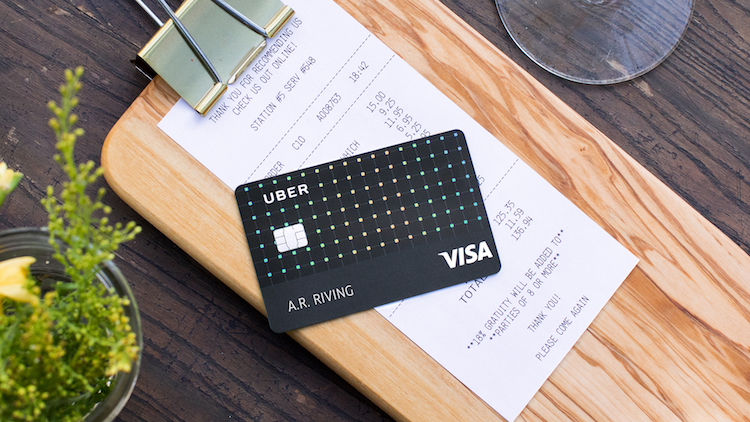How new payment technology is helping Gett compete with Uber globally
An ex-Uber marketing pro weighs in on the Uberization of money debate
[dropcap size=big]W[/dropcap]hile the stock market opened 2016 with a loud plop, the hottest companies continue to be technology startups. Atop this pile sits Uber. Uber has become synonymous in tech circles for how easy buying things really can be and how enjoyable the experience can be, as well. If the taxi industry can be Uber-ized, the thinking goes, so can many large industries that have similarly been slow to change.
This conversation hit finance circles when the WSJ ran a story about how slow the finance industry has traditionally been in adopting best practices that have influenced the buying cycle in other industries. According to the article’s author, Zachary Karabell, head of global strategy at Envestnet, finance is indeed now undergoing its own Uber process. Not overnight or over weeks and months, but over the next few years, major parts of finance will undergo technology-driven disruption. And this change is being driven by fintech startups, like Wealthfront, EquityZen, Loyal3, and ZestFinance.
Whatever the risks, however, the Uberization of finance is no fad or stunt. Many of today’s startups may implode, as most do, but the spread and democratization of capital—and the proliferation and analysis of data—are irresistible trends. They will offer new opportunities to millions of people, entrepreneurs and investors alike. They also will unlock a vast amount of money, energy and talent, and to that we simply should say, bring it on.
Not everyone buys this line of thinking. Cornerstone Advisors’ Ron Shevlin explains that there isn’t really a parallel to the financial industry because this whole discussion is based on a misunderstanding of what Uber has really done. Uber pursued a consolidation strategy in a highly fragmented industry. The WSJ cites marketplace lending and crowdfunding as examples of uberization but rather than consolidate, these new forms of finance add to the fragmentation of the finance industry.
An Uber exec weighs in
Upstart, an online lender targeting millennial borrowers, is typically used as an example of the disruptive change that’s happening in finance. In order to lend to young adults, Upstart had to turn traditional lending models on their heads, as many of these FICO-like credit scores rely on historical data. As young people find their places in the gig economy, it’s not easy for them to get loans. Upstart’s forward-looking models are trying to change that. Young borrowers don’t have very much credit history, so Upstart uses other inputs to determine creditworthiness for its customers.
Mike Osborn joined the startup finance company recently as the company’s first CMO. Hailing from the marketing team at Uber, Mike joins a firm that’s generated $240M in originations in 18 months since it launched, averaging 25% month to month growth since inception (you can listen to Tradestreaming’s interview with Upstart founder and ex-Googler David Girouard below).
Osborn has a quick 3 point questionnaire when testing for Uberization:
- Is this an industry ripe for disruption?
- Who’s the disruptor?
- How will it be disrupted?
Finance fits this model, and to Osborn, much of the change is going to happen from the bottom up — with changes in consumer usage patterns brought about by top UI/UX in new finance apps and platforms. “When you think of what drives user experiences, in Upstart’s case, it’s about having better holistic models, better rates, different options — all with the view that we’re helping our users out of a jam,” Osborn explained.
In this vein, next generation finance tools should resonate with users and generate the same reactions as other apps residing on their smart phones. Why shouldn’t users have the same visceral responses to their banking apps that they do to their transportation apps?
“When your target audience are millennials, they live and breathe online and they do it in a community-driven way. Financial service providers need to find ways to get their users financially fit and package it into a shareable experience and celebrated event — the same way getting physically fit is. When someone loses a lot of weight and gets in shape, they take a before-and-after picture and post it socially. I can imagine the same thing happening before and after a difficult credit card situation.”
Growth hacking new accounts online and offline
Perhaps ironically, many of today’s online financial services startups rely on offline methods to acquire new customers. It’s especially acute when it comes to landing new borrowers, as two of the largest online consumer lenders, Lending Club and Prosper, each send tens of millions of offers via snail mail every month. Upstart’s Osborn embraces both online and offline acquisition marketing.
“When we think about where we’re going to find our next customers, we’re definitely looking at the offline opportunity. We’ve been positively surprised in volume and profitability with offline channels. When you get an email offer to refinance your debt, it’s pretty easy to ignore it. But when you get your credit card statement in the mail and a couple of days later, receive an offer to help pay it off, the offer has relevance and timeliness when it comes via direct mail.”
Same goes for social media marketing. Osborn claims that a Facebook response is either immediate or it disappears into the ether. That’s not to say Facebook isn’t fertile ground to message new prospects — it just needs to work quickly. Same goes for Google and search engine marketing. “The economics on Google work but we’ve been most positively surprised with direct mail,” Osborn reasoned.
If finance is being Uberized, where’s the pressure coming from?
It’s debatable whether the disruptive change everyone’s talking about is supply-side or demand-side driven. Osborn thinks it’s actually a confluence of factors that’s enabling the next generation of financial services, technologies, and apps racing to get a foothold with today’s customers.
- Consumer-led: The changes happening in the industry right now are implicitly lead by the consumer. People are demanding change. When every experience looks like an Uber experience, you get what you want and begin to expect more. You don’t want to have to go through all the hoops and paperwork associated with traditional financial services.
- Technology-driven: A lot of the change that’s happening in online lending is coming from changes in capabilities. Now, at Upstart, the firm has the power to make credit decisions using so many different signals — like what grades a prospective borrower got in college. These borrowers were previously shut out of the market if they were judged solely on historical credit models.
Osborn believes it takes a new type of company and leadership to be able to compete today — both require an understanding of big data and large systems. “When I first met with Dave and the rest of the leadership team, founded by Googlers, I saw they understood the power of taking in all that data and making wise and powerful decisions, like extending credit, with it. There’s a reason we have such good ratings on CreditKarma and high NPS scores with our customers.”
Whether financial services are actually being Uber-ized misses what’s really going on. Led by technology advances and driven by customer demand, startups and incumbent institutions are changing the way users interact with money.
Photo credit: FamZoo via Visual Hunt / CC BY-SA










